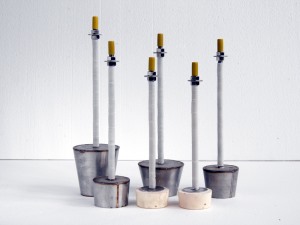- 08
- Nov
Ways to prolong the service life of the lining of an intermediate frequency coreless induction furnace
Ways to prolong the service life of the lining of an intermediate frequency coreless induction furnace
In the use of electric furnaces, the life of our furnace lining depends mostly on the corrosion level of the furnace bottom and the integrity of the furnace lining to determine whether it can continue to be used.

1. Corrosion of furnace bottom position
In the normal use of the furnace lining, the thickness of the furnace lining and the thickness of the furnace bottom will gradually become thinner due to the cyclic erosion of molten iron during long-term use. The intuitive situation is the increase of the furnace capacity, and the ordinary furnace lining will be corroded by 30-50%. At that time, it will be knocked down again, and then new furnace building work will be stopped. From the analysis of the entire furnace lining, the obvious location of erosion is the slope position where the furnace bottom and the furnace lining are separated. The furnace lining is on a circular arc surface, and even the earthwork where the bottom material and the furnace lining material are separated shows a slight depression. Affect the safety of use, you need to stop rebuilding the furnace. In addition to the density of the quartz sand during furnace construction, the reason for the formation of the lining depression is also related to the chemical corrosion during the charging and condensing of the materials in our use and the mechanical corrosion during the operation.
2. Ang integridad ng lining ng pugon
The integrity of the lining refers to the iron penetration and cracks that often appear in the lining. In our daily life, there are often weekend breaks and shutdowns. When the electric furnace stops condensation in the air, the furnace lining will gradually cool down. Because the sintered lining material is brittle, the sintering layer cannot be prevented under the effect of thermal expansion and contraction. Cracks appear, which are more harmful, and will cause molten iron to penetrate into the furnace lining and cause furnace leakage. In terms of maintenance of the furnace lining, the finer the cracks, the denser the cracks and the better spreading, because only in this way can the cracks be bridged to a greater extent when the furnace is cold-started, and a good sintering layer of the furnace lining can be obtained.
3. Frequently conduct a comprehensive inspection of the furnace lining
In daily life, the position where iron infiltration is often seen is the position where the nozzle and the lining material are separated. Because they are two different materials, there must be a certain gap at the separation point. This gap creates an opportunity for iron infiltration. The position of the coil is also under the furnace mouth, so it is very important to check and repair this problem regularly. If iron seepage is found, it must be cleared and repaired in time to avoid damage to the coil. In addition to paying attention to the mouth of the furnace, we should also strengthen the inspection of the entire furnace lining, and achieve a comprehensive understanding and timely maintenance of the safety of the entire furnace lining.
